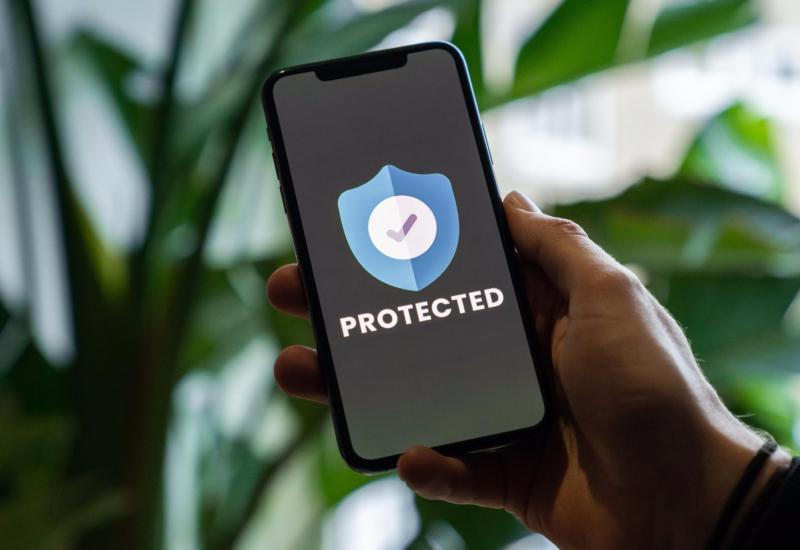Start Building Your Child’s Credit
The rapid advancement of technology enabled more sophisticated methods for stealing personal information, making identity theft a growing concern. As a result, over 40 million people in the United States were victims of this insidious crime in 2022 alone, racking up billions of dollars in losses.
To help you protect your identity, this comprehensive guide will show you the ins and outs of identity theft, including the strategies and tools you need to avoid becoming a victim.
Six Most Common Types of Identity Theft
Identity theft can result in various consequences, including financial, personal, and legal issues. To protect yourself better, it’s important to be aware of the different types of identity theft that you can fall victim to. Here are the six most common ones:
- Financial identity theft
- Tax identity theft
- Criminal identity theft
- Medical identity theft
- Synthetic identity fraud
- Child identity theft
Financial Identity Theft
Financial identity theft is a serious crime that involves criminals accessing someone’s confidential financial information, such as banking, credit, and debit card details. They can then use the stolen data to make fraudulent purchases or gain access to financial accounts, potentially permanently damaging the victim’s financial standing.
Tax Identity Theft
This type of fraud occurs when someone steals your Social Security number (SSN) or other personal information to file tax returns and claim refunds. Unfortunately, restoring your finances can take a lot of time and effort if you’re a victim of this crime. This is because it’s difficult to prove you’re not responsible, and clearing up the tax inconsistencies takes a lot of back and forth with the IRS.
Criminal Identity Theft
Criminal identity theft happens when someone who has committed a crime uses another person’s name or other personal information to tie their criminal record to the victim’s identity instead of their own. This can result in various negative experiences for the victim, from issues with law enforcement to difficulties in other situations that require a background check, such as obtaining a job or getting an apartment.
Medical Identity Theft
Medical identity theft occurs when malicious individuals gain access to private medical information and misuse it for their own gain. As a result of this type of identity theft, victims can suffer a range of consequences, including:
- Stolen healthcare services
- Financial loss
- Blackmail
- Defamation
- Other damages, such as compromised health history
Synthetic Identity Fraud
Synthetic identity fraud is a highly complex issue that involves criminals using stolen data to create an entirely fake persona. It’s difficult to detect because criminals take pieces of stolen identities, combine them with seemingly realistic but false information, and then open up fake accounts.
Synthetic identity criminals often seek credit card services in their victims’ names or set up loan operations that run off the radar for months before getting caught. In most cases, victims are unaware of the crime being committed until it’s too late and can face considerable financial losses when the crime is discovered.
Child Identity Theft
Child identity theft is a serious crime that entails someone stealing a child’s personal information, such as their SSN, birth date, or name. Identity thieves can use this information to open new credit accounts, take out loans, or even commit medical fraud in the child’s name. This can damage the child’s credit report and make it difficult for them to obtain credit or loans in the future.
How To Protect Yourself From Online Identity Theft
(Image suggestion: A person holding papers with personal information with a lock and key symbol over them)
Online scams are the most prevalent way for thieves to acquire personal information today. In 2022, the FBI received over 800,000 complaints of internet crime in the U.S., resulting in losses exceeding $10 billion. This is why protecting your identity online is the best way to reduce the likelihood of becoming a victim of identity theft.
Here are five essential tips to help safeguard your or your child’s personal information from online identity theft:
- Create strong online passwords
- Keep sensitive information private
- Beware of email scams
- Check credit reports regularly
- Freeze your credit
Create Strong Online Passwords
Creating strong passwords is one of the most effective ways to prevent identity theft online. Here are some ways to create passwords that will keep your family’s data safe:
- Using a combination of letters, numbers, and symbols when creating passwords
- Not recycling passwords across multiple sites
- Avoiding using obvious words or phrases such as “password” or birthdays that may easily be guessed by hackers
- Changing passwords often and not sharing them with anyone
Keep Sensitive Information Private
One of the most important aspects of staying safe online is not sharing personal information like your name and address with people you don’t know, especially on social media. You should also teach your child to do the same.
Since your banking details, credit card numbers, or passwords can be used for malicious purposes, it’s important to avoid sharing financial data with anyone—even the people you trust. What’s more, use secure payment gateways when shopping online and rely on multi-factor authentication and encryption technologies to protect your sensitive information when making online transactions.
Beware of Email Scams
Email scams are clever attempts to get access to your personal information. To protect your identity, be alert and suspicious of any emails sent from unexpected sources. Don’t open attachments or click on links unless you’re sure they’re secure.
Check for typos, unusual language, or inconsistencies in the sender’s name, which may indicate a spoofed email. Most importantly, never give out your personal information via email if you’re not sure of the source, and encourage your family to do the same.
Check Credit Reports Regularly
Monitoring credit reports can help you find out if someone has stolen your or your child’s info and used it to engage in unauthorized financial activities or open fraudulent accounts in your or your child’s name. Checking this at least once a year is key for spotting suspicious activity early and keeping identity criminals away.
Additionally, you can set up alerts so that you’re notified immediately if there’s any change in your accounts, such as a late payment or a new account opened in your name.
Freeze Your Credit
In case someone has managed to steal your or your child’s info online, you can freeze your credit to prevent identity criminals from opening accounts using the stolen information, which can help defend against identity theft. All you need to do is contact the three major consumer credit bureaus—Experian, TransUnion, and Equifax—to request a freeze on your files.
Top Products and Services for Enhanced Identity Security
(Image suggestion: A composite of various security products neatly arranged)
To further ensure the safety of your and your family’s identities, you can rely on products specifically designed to protect sensitive information. These include:
- Biometric verification software—This technology uses fingerprints, retinal scans, and other biometrics to verify a person’s identity
- Password managers—These tools securely store usernames, passwords, and other sensitive data so you can keep track of them more easily
- Anti-phishing software—This technology filters emails for malicious links and blocks access to dangerous websites that could contain ID theft schemes
- Encrypted messaging apps—These apps help you send private messages using military-grade encryption, ensuring your conversations are secure from outside parties
- Firewalls/VPNs—These tools provide an extra layer of online security by creating a secure connection between your computer and the internet, keeping hackers out while protecting your IP address from being tracked or monitored
- Identity theft monitoring services—An identity theft protection service like FreeKick can help monitor your credit reports and other sensitive information for signs of identity theft, helping protect you and your family from fraud
Protect Your Family’s Identities With FreeKick
If you want to ensure ongoing protection of your child’s sensitive information as well as your own, a dedicated identity monitoring solution may be ideal for your family.
Developed by Austin Capital Bank, FreeKick provides a combination of identity protection and credit-building services to help protect your family from identity theft and teach your child financial responsibility.
FreeKick’s ID Monitoring Services
FreeKick’s comprehensive set of services that monitor, protect, and restore the identities of your family members is available for up to two parents and six children aged 0 to 25.
Identity protection services for parents and adult children include:
- Credit profile monitoring
- Social Security number monitoring
- Dark Web monitoring for personal information
- Up to $1 million identity theft insurance
- Full-service white-glove concierge credit restoration
- Lost wallet protection
- Court records monitoring
- Change of address monitoring
- Non-credit (Payday) loan monitoring
- Free FICO® Score monthly
- FICO® Score factors
- Experian credit report monthly
For minor children, FreeKick offers the following services to protect their identity:
- Credit profile monitoring
- Social Security number monitoring
- Dark Web monitoring for child’s personal information
- Up to $1 million identity theft insurance
- Full-service white-glove concierge credit restoration
- Sex offender monitoring—based on sponsor parent’s address
FreeKick’s Parent-Sponsored Credit Building
In addition to providing an innovative solution for protecting your family’s personally identifiable information, FreeKick also establishes and builds a credit profile for children aged 13 to 25. Here’s how to get started setting a strong foundation for your child’s financial future with FreeKick:
- Create an Account—Sign up at FreeKick.bank by selecting a suitable plan. Add your deposit amount and choose Activate Credit Building in the account dashboard
- Set it and Forget It—FreeKick creates a 12-month credit history for your child through a zero-interest credit-builder loan that’s paid back using the deposited funds
- Keep Growing—After the 12-month term ends, you can opt to renew or close the account and receive a full refund of the original deposit amount made
Unlike other similar services, FreeKick doesn’t require a monthly subscription. Instead, you can choose your preferred plan based on your wanted deposit amount and pay a small annual fee that suits your budget:
| Deposit | Annual Fee |
| $3,000 | $0 (Free) |
| No deposit | $149 |
FreeKick deposits are FDIC-insured up to $250,000.
Safeguard the identities of your family members while improving your child’s creditworthiness—open a FreeKick account.

Freekick provides a double dose of financial empowerment and security for your whole family. It helps teens and young adults build strong credit profiles and offers identity motoring for up to two adult parents and six children under 25.





